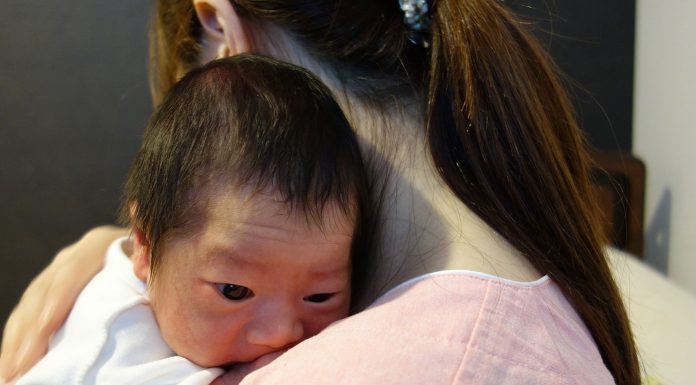What is a specialist nurse? People argue that our health service needs more of them, particularly to meet the growing burden of chronic disease and a rapidly ageing population. But what actually are they? And who decides a nurse or specialty has made the grade? Until recently there was no one answer to those questions and no consistent pathway for nurses to follow.
Back in 2006, Kathy Holloway was looking for a gap to fill for her professional PhD research and decided that if the country wanted more specialist nursing services it needed a better understanding of what a specialist nurse actually was.
Five years later she is Dr Holloway, and major aspects of the specialist nursing framework she developed for her PhD are embedded in the National Nursing Consortium’s specialty standards endorsing process launched in 2011.
Her research was timely. The recommendation to develop a specialist nursing framework was first made in the 1998 Ministerial Taskforce. The Nursing Council’s moves to develop specialist competencies were superseded by the Health Practitioners Competence Assurance (HPCA) Act 2003. A call was also made in 2006 by the Nursing and Midwifery Workforce Strategy Group for more specialist nursing services to meet patient needs.
“But we still didn’t have a framework,” Holloway says. “One of the issues was that (instead) we had lots and lots of different frameworks and different models.”
To fill the vacuum, each specialty interest group had developed its own system and there was no consistency. Some frameworks were quite complex while others offered just bare descriptions with little detail. “So there was huge variation and there still is.”
Holloway, as associate dean of Whiteria’s faculty of health and the chair of nurse educator group NETS, was concerned by the lack of clarity and national consistency.
So she set out to develop a model, starting with a literature review of existing specialist frameworks internationally and then working with nursing leaders and nurse specialists across the country to build and test a workable and nationally consistent framework for New Zealand.
The resulting New Zealand Nurse Specialist Nursing Framework has three components: one sets out the level of practice required of a specialist (role adequacy); another is to determine whether the specialty is a recognised branch of nursing (role legitimacy); and the third is to determine whether there is a specialist nursing body to set and authorise standards in that specialty (role support).
Challenging the competency “craze”
Holloway is no fan of the “dominant ideology” of using competencies to describe levels of nursing practice, so she looked elsewhere when trying to define what makes a nurse a specialist.
“We’ve gone crazy with competencies as a profession, not only in New Zealand but also overseas. My view is that we over-use competencies to describe practice. They have a place but I think they are only part of what we need to use.”
So Holloway’s model is built on the theory of capability rather than competency. She says competencies are about “fitness for purpose” and tend to be job-specific, so they set out competencies or minimum standards needed for a certain job. “Competency is about the beginning point in development of expertise rather than the endpoint.”
Capabilities, on the other hand, are not so much about what you do but how you do it. So she drew on the literature on capability for her definition of the expertise required by a nurse specialist. “It’s someone who can adapt to changing circumstances, someone who can articulate what they are about and can explain what they are doing.”
And importantly, a nurse who can not only provide the level of nursing care expected in a stable environment but can continue to do so when “it all goes to custard”. “Competency is about doing the job right and capability is more about knowing the right job to do.”
Expanded nursing or just new technique
Also to be decided is whether the area in which the nurse wants to specialise is actually a legitimate nursing specialty.
Holloway worked on a set of criteria for deciding whether a specialty is a legitimate field of expanded nursing practice and not simply an extended role involving new technology or a ‘bolt on’ set of skills. (The criteria are now incorporated into the National Nursing Consortium’s specialty standards ‘check list’.)
Criteria include that the specialty is defined as a distinct area of nursing practice underpinned by nursing ethics and requiring specialty knowledge and skill sets; that there is both a community demand and need for the service; and that there is a core of knowledge on the specialty that is being continually expanded and refined.
Holloway says because a role begins as an extended role doesn’t mean it cannot evolve into a fully-fledged expanded role or specialty. “You have to extend before you expand.”
A specialty also has to be stand-alone and not fall largely under the shadow or control of another specialty. Holloway says one of the issues is the creation of multiple subspecialty groups that could come under the umbrella of one specialty.
But the move has begun, under the impetus of the New Zealand Nurses Organisation, to bring groups together like the formation of the College of Primary Health Care Nurses.
Holloway says forming bigger specialty groups also has the positive spin-off of influencing health policy, because policy makers and workforce planners can turn to one group to get a viewpoint or data, rather than having to consult multiple groups that may give conflicting messages and dilute nurses’ chances to improve patient outcomes. But subspecialty groups still have their place within larger organisations, so nurses can network and share ideas and resources in their specialty niche.
So who decides?
This brings us to Holloway’s framework’s third component – role support. How does the profession create, credential and support the specialty standards that allow a nurse to be called a nurse specialist?
When she began her research, Holloway counted up to about 20 different specialty and subspecialty groups, each with their own variety of specialist framework built on competencies, training or standards.
Holloway believed there were too many frameworks and not enough consistency, and her model calls for all specialty frameworks to be linked to the professional development recognition programme (PDRP) framework because that is the nationally consistent framework for talking about levels of practice.
The professional specialty groups under her framework are responsible for identifying the aspects of care specific to their specialty and then setting down the knowledge and skills required to deliver that care in a knowledge and skills framework (KSF).
That framework also has to make clear the different level of skill and knowledge required of “all”, “many” and “some” nurses in their specialty. For example, a New Zealand pioneer of the new KSF, the National Diabetes Nursing KSF, sets out what “all” nurses need to know about diabetes to be competent, what the “many” nurses who work predominantly in diabetes as generalist or specialty diabetes nurses need to be proficient, and what the “some” expert nurses need to be specialists in the field. “As patient needs become more complex, so does the level of nursing responsibility become more advanced.”
Under the model the profession also has the responsibility of evaluating and endorsing the different KSFs so nurses and employers know that authorisation as a nurse specialist in that field has national standing. Since the start of 2011, the National Nursing Consortium has been taking on that responsibility (see sidebar), and the new Respiratory KSF is the first specialty framework to be endorsed by the consortium process.
So five years on from starting her research, Holloway believes New Zealand is much further along than it was, particularly in having the National Nursing Consortium endorsement process, which puts New Zealand ahead of many countries.
Influencing that work has been her own New Zealand Nurse Specialist Nursing Framework that is now out there to help people decide what makes a specialty practice area and a nurse specialist, as well as her term definitions for “expanded”, “extended” and “advanced” being adopted by the National Nursing Organisations.
“It has really been great to be in a position to utilise the work I’ve been doing in academic study to support the work of the profession.”
Holloway has presented her framework to nursing audiences both nationally and internationally, with a recent presentation in the UK leading to a request for a copy from the Irish nursing regulatory authority. What happens from now on with her framework and its future development is up to the sector. “It will only work if people find it useful.”
She hopes that in another five years the three concepts at the core of her framework continue to make their mark in answering the question, what does a nurse specialist and a specialist nursing service look like?
“The underpinning concept of being able to clearly describe what is the legitimacy, adequacy and support needed for a specialist nursing service to deliver to patients – that’s what I’d like to see.” experience.
DEFINITIONS of NURSE SPECIALIST and NURSE SPECIALIST PRACTICE
“The exercising of higher levels of judgment, discretion and decision making in clinical care. Such practice will demonstrate higher levels of clinical decision making and so enable the monitoring and improving of standards of care.”
Consensus definition developed with nurse leaders during Holloway’s research
“A nurse prepared beyond the level of a nurse generalist and authorised to practise as a specialist, with advanced expertise in a branch of the nursing field.”
2009 definition from International Council of Nurses
RESEARCH HELPS SHAPE NATIONAL NURSING CONSORTIUM PROCESS
Holloway was well down the track of her research when in late 2008 questions were raised about what a registered nurse could or couldn’t do under the current scope.
The Nursing Council decided to review how advanced nursing practice fitted inside the current RN scope after ruling that several expanded practice roles – including the first surgical assistant role – fell outside the scope and needed council authorisation.
Options discussed during the RN scope review included whether a credentialing framework was needed for authorising extended or expanded practice and, if so, whether the Nursing Council or the profession was the most appropriate body to do so.
Nursing organisations were keen for the profession to take responsibility, leading to the creation of the National Nursing Consortium and a national voluntary mechanism for endorsing specialty standards.
The consortium members (the New Zealand Nurses Organisation, the College of Nurses Aotearoa, the National Council of Maori Nurses and the New Zealand College of Mental Health Nurses) set out to develop a process for endorsing specialty standards or knowledge and skill frameworks developed by the specialty practice nursing groups.
With an important aspect of Holloway’s professional doctorate programme being “linked to real life practice”, the chair of NETS was ready and willing to share her work with the consortium when it came to consult with the nurse educator group. “And they thought it would be useful to use my work to guide them on how they put the process together.”
Holloway says the result was that parts of the consortium’s process are “heavily based” on her work, particularly the criteria for deciding whether a specialty group represented a legitimate specialist area of practice. (The pioneering National Diabetes Nursing Knowledge and Skills Framework (KSF), developed by Helen Snell, was also used to help develop the consortium’s endorsement process.)
Holloway was also involved in helping the profession develop a glossary to provide an agreed definition of extended, advanced and expanded practice. This is available on the NETS website: www.nurseducation.org.nz






















